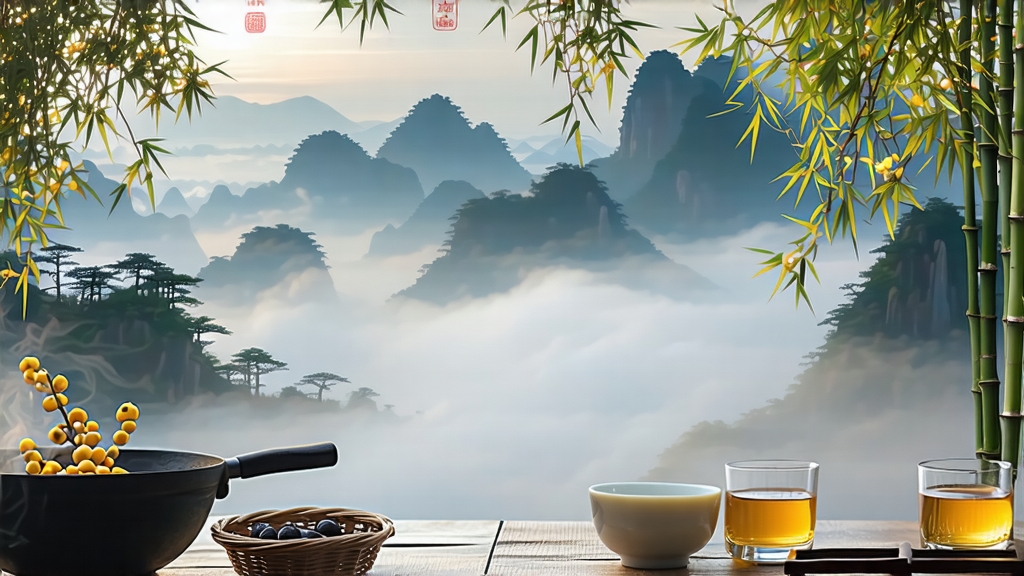
Tucked high in the mist-veiled Dabie Mountains of western Anhui Province, a tea once reserved for emperors quietly continues its slow, fragrant life. Huoshan Huangya—literally “Huoshan Yellow Bud”—is the least-known member of China’s six-family tea clan, yet it carries the most delicate signature of all: a sun-warmed straw color, a scent of roasted sweet corn, and a texture so velvety it feels like sipping liquid silk. To international drinkers who thrill in chasing new flavors, Huoshan Huangya offers a time capsule of Song-dynasty craft and a masterclass in the mysterious “yellowing” technique that gives the entire category its name.
History: from mountain herb to tribute treasure
The first written record appears in 1042, when a local magistrate sent “buds as golden as millet” to the Song court. By the Ming dynasty the tea had become so coveted that caravan drivers greased their wheels for the sprint to Beijing, fearful that late-arriving chests would incur imperial displeasure. When the Qing Qianlong Emperor visited Huoshan in 1751, he supposedly set aside his beloved Longjing for three days after tasting the yellow buds, declaring them “the gentlest intoxication under heaven.” Revolution, war and market neglect pushed production to the brink of extinction in the 1970s; only a handful of families kept the art alive in secret. A state-led revival in 2003 returned the cultivar to its former glory, and today a scant 120 tons leave the valley each spring—half of that snapped up within China, the rest scattered among specialty dealers from Paris to Melbourne.
Terroir: why the mountain makes the color
Huoshan county straddles 31°N at elevations between 400 and 800 m. The area’s hallmark is a perpetual cloud blanket that shortens sunshine to four hours a day, forcing the tea bush to synthesize extra l-theanine and soluble sugars. Granitic soils, rich in potassium and fluorine, drain quickly yet retain evening moisture, encouraging tender, down-covered buds. Temperature swings of 10 °C between night and day lock in floral precursors while slowing bitterness. The result is a raw leaf that already tastes lightly sweet on the tree—ideal fodder for the labor-intensive yellowing that follows.
Craft: the dance of killing green and letting it sweat
Picking begins when two-thirds of the buds are still closed, usually the clear morning after Grain Rain. Only the top centimeter—what locals call “sparrow’s tongue”—is plucked, yielding 45 000 shoots per kilo of finished tea. The leaves are spread on bamboo trays for two hours to wither, then tossed by hand into a wok heated to 160 °C. The 3-minute shaqing (kill-green) halts oxidation but, crucially, leaves a touch of active moisture deep inside the bud. While still warm, the leaf is piled in heaps the size of a newborn’s pillow and wrapped in damp cotton. Over the next 24–48 h the pile “sweats,” turning from jade to pale topaz as chlorophyll degrades and polyphenols gently polymerize. Every two hours the master lifts the cloth, fans the pile, and checks aroma—too grassy and it needs more heat; too sour and the window is lost. Finally the leaf is given a low-temperature bake over charcoal embers, hand-rolled into tiny spears, and rested for a month so the flavor settles. The entire cycle demands five days and a craftsman's intuition; machines cannot replicate the micro-oxygenation that creates Huoshan Huangya’s signature “chestnut-sweet” note.
Grades & styles
Imperial Tip (Te Ji): 100 % single buds, picked before April 5, delivering a luminous apricot liquor and lingering orchid finish.
First Grade (Yi Ji): one bud and one unfolding leaf, plucked before April 15, softer body, hint of steamed squash.
Second Grade (Er Ji): one bud and two leaves, harvested before May 1, rounder mouthfeel, price friendly for daily drinking.
A modern micro-lot called “Snow Bud” is withered overnight in a snow-cooled room, heightening freshness while preserving the yellowing; only 18 kg were made in 2023.
Brewing: the gongfu approach
Water: spring or filtered, 85 °C.